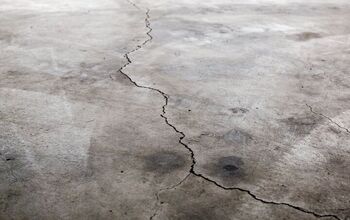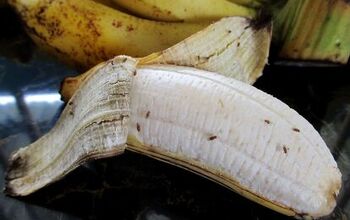Kitchen Sink Drains Into The Yard? (Here's What You Can Do)

When you aren’t able to use your kitchen, this can put a strain on your household for several reasons. A kitchen is a place to not only cook meals but where we find ourselves spending a lot of time with our family. Plumbing issues can make you feel helpless, especially when they affect an everyday appliance like the kitchen sink.
If your kitchen sink is having drainage issues and draining into your yard, you most likely have a clogged pipe. This clogged pipe can prevent proper drainage, and you will have to snake and unclog the drainage pipe. This should get the kitchen sink back in working order.
For those with children, breakfast before school and homework and dinner at the kitchen island is a way of life. Being without a properly functioning kitchen can shake up your routine, affecting every member of the house.
Do You Need to Hire a Plumber?
Get free, zero-commitment quotes from pro contractors near you.

Quick Solutions to Sink Draining Issues
When you walk into your kitchen and discover that the sink is now draining into your yard, it’s time to unclog the drain. Before you throw in the towel, don’t pick up the phone and call the plumber just yet.
Hiring a plumber can be extremely expensive. Sometimes the solutions to your plumbing problems are simple, and you can fix them quickly.
You won’t need to go out and rent or buy any special tools to unclog your kitchen sink. You can likely find what you need in your pantry, kitchen cabinets, and around the house.
Everyday items you’ll need to get the job done:
- Pot or kettle
- Heat source for boiling water
- Baking soda
- Vinegar
- Salt
- Plunger
- Coat hanger
Here are a few painless and non-invasive ways for a Do-It-Yourselfer to unclog the kitchen sink (instead of calling your local plumber).
Step One: Boiling Water
Bring a pot or kettle of water to a boil on your stove. If there is also a backup inside the sink, remove as much standing water from the kitchen sink as possible.
When the water on the stove comes to a rolling boil, remove the water and pour it down the kitchen sink drain. This boiling water should help to remove any clogging. If it doesn’t, let the water cool, remove the standing water, and try again.
Step Two: Garbage Disposal
If you have a garbage disposal, this could be causing the problem, and your kitchen sink isn’t clogged at all. A clogged garbage disposal can clog your kitchen drain.
If the water only goes down when you turn the garbage disposal on, your disposal is clogged. If this is the case, it could be an easy fix. To fix the garbage disposal, first, turn off your garbage disposal and unplug it. This precaution is for safety measures.
When that is complete, use a plunger to plunge the disposal as you would if you were trying to unclog the toilet. This should release any clog. After, rinse the disposal with warm water.
If the garbage disposal is the problem, but it’s not unclogging, you may have to give your plumber a call. Depending on the age of the garbage disposal, your plumber may tell you that you need to purchase a new one. Most garbage disposals have a life expectancy of about 10 years, so keep that in mind.
If the garbage disposal doesn’t seem to be the issue, move on to the next step.
Step Three: Salt and Boiling Water
Kosher or coarse salt works best here, but table salt can work, too. Bring a pot or kettle of water to a rolling boil.
While the water is heating, pour ½ cup of salt down the kitchen sink drain and let it sit. When the water is boiling, carefully pour the water down the drain, flushing the salt mixture away.
Step Four: Vinegar and Baking Soda
Generously pour one cup or so of baking soda into the kitchen drain. After, pour an equal amount of vinegar down the drain, as well.
Any vinegar will work here, but white vinegar or apple cider vinegar is best. White vinegar can have up to seven percent acetic acid making it easy to break down clogs. After you pour the vinegar onto the baking soda, the solution will start to bubble.
Once the bubbles subside, stop up the drain using a kitchen sink stopper and wait for about 15 minutes. This will give the solution time to properly and adequately break down any clog that may be there.
When the fifteen minutes is up, run hot tap water down the drain to clear the solution and see if the clog dissipates. If the clog is still there, try this method a few times. If it persists, continue to the next step.
Step Five: Baking Soda and Salt
Mix one cup of baking soda with ½ cup of salt. As mentioned before, Kosher or coarse salt is best, but table salt will also work in a pinch. Pour the mixture down the drain of the kitchen sink and let it sit for several hours. It is best to do this in the morning before work. When you return home, bring a pot or kettle of water to boil.
When the water comes to a rolling boil, flush the baking soda and salt mixture down the sink with the boiling water. If this doesn’t work the first time, you can repeat the process, then continue to the next step.
Step Six: Plunger
This method of unclogging the kitchen sink will depend on the type of sink you have. If you have a double sink, tightly cover or seal off the second side with a wet washcloth or stopper.
On the side that you are plunging, fill with water. You will want to create a tight seal around the plunger. Plunge vigorously until you feel that the clog breaking up.
Step Seven: Coat Hanger
If you have tried every step to no avail, grab a coat hanger from your closet. A wire coat hanger will work similarly to a plumber’s snake.
Straighten the coat hanger and carefully insert it into your kitchen sink drain. The coat hanger can either pull the clog out or push it through the pipes.
Maintaining Your Kitchen Sink
Once you’ve unclogged your kitchen sink, make sure you never have to go through that process again. Mix equal parts of baking soda and vinegar, pour down your kitchen sink drain, and flush with hot water. Do this once a month to prevent any further drainage issues.
It’s essential to clean your kitchen sink regularly to keep it smelling fresh and working properly. A baking soda and vinegar mixture will also neutralize any odors while keeping the drain clear.
If your garbage disposal was causing the drainage issues, remember not to overload it. Check your maintenance guide for proper ways to load the disposal and what not to put down the garbage disposal.
Be sure to cut up waste into small pieces before putting it into your garbage disposal. Make sure everything is adequately ground before adding more. As a general rule of thumb, never put bacon grease, oils, coffee grounds, or shellfish into your garbage disposal.
Do You Need to Hire a Plumber?
Get free, zero-commitment quotes from pro contractors near you.

Related Questions
What if none of these steps work?
If you have tried each of these steps and still cannot find a solution to your clogged drain, it is time to call in the professionals. Keep an open dialogue with your plumber, and let him know everything you tried to alleviate the clogged kitchen sink.In doing this, the plumber can better understand the issue and get your kitchen sink back in working order quickly and efficiently!
My sink is not completely clogged, but the water is draining slow. What should I do?
If your drain is running slow, any of the issues above could be the cause. Therefore, first, try the steps above to loosen any potential clog. If that doesn’t work, there could be a backup in your main vent or septic system. If this is the case, you’ll want to call a plumber to examine the issue. Plumbing issues can feel overwhelming. But with a little patience and some everyday items around the house, you can unclog your sink in no time!

Stacy Randall is a wife, mother, and freelance writer from NOLA that has always had a love for DIY projects, home organization, and making spaces beautiful. Together with her husband, she has been spending the last several years lovingly renovating her grandparent's former home, making it their own and learning a lot about life along the way.
More by Stacy Randall





















![Cost To Drill A Well [Pricing Per Foot & Cost By State]](https://cdn-fastly.upgradedhome.com/media/2023/07/31/9074980/cost-to-drill-a-well-pricing-per-foot-cost-by-state.jpg?size=350x220)





